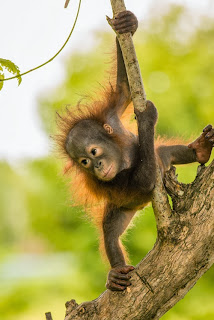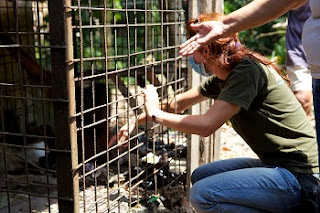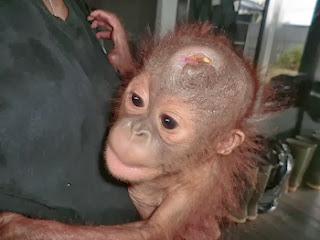At the end of October the team was called out to the village of Tumbang Titi, a four hour drive from Ketapang, to rescue a young orangutan called Rika, who was being kept as a pet.
 Rika is about three years old and her owners said they had been keeping her for the last three months, but we suspect she has been a pet for much longer as she is very habituated to people. Her last owner had paid about $50 for her and implied that he would like money for handing her over to us. But we will never pay for an orangutan because it only encourages the trade in them.
Rika is about three years old and her owners said they had been keeping her for the last three months, but we suspect she has been a pet for much longer as she is very habituated to people. Her last owner had paid about $50 for her and implied that he would like money for handing her over to us. But we will never pay for an orangutan because it only encourages the trade in them. Although Rika was kept in a small cage, she also spent time chained by the neck under the house, along with a dog and a pig. She was sometimes let off her chain and would go and make a nest, but would always return for food. She has some wounds on her neck from the chain and a skin infection but both are now being treated by our medical staff and are healing well.

Rika’s hair is in poor condition as a result of a diet of vegetables and rice, but this will improve now she is being fed more suitable and nutritious food.
Rika is now in quarantine and has had a few health tests for which we are awaiting results. She has a very sweet personality and vocalises for attention.

















